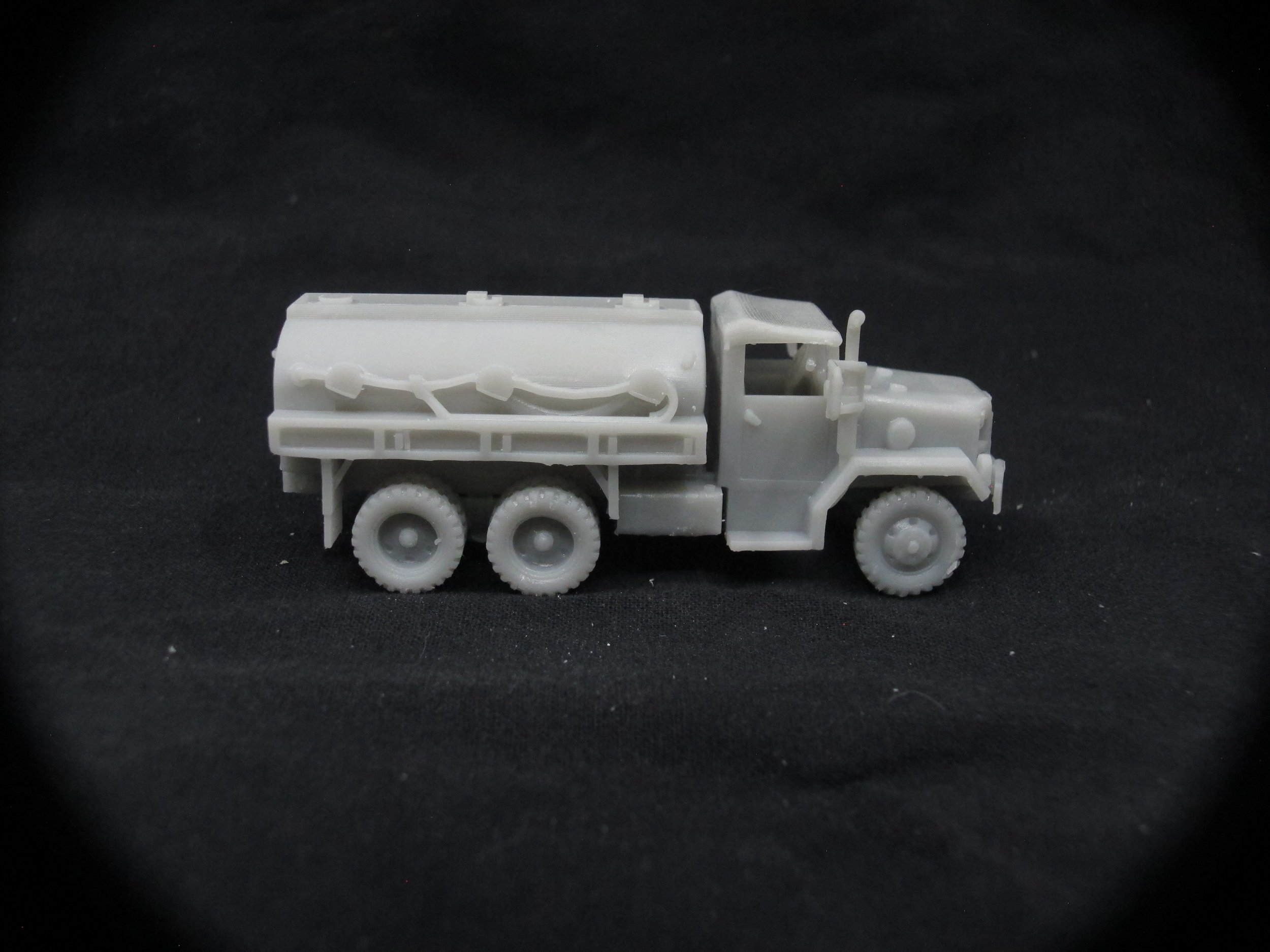In the works VII and the way ahead
Today we’re going back to the US for a look at logistics. But first, some other logistics.
I get a fair number questions asking what I’m working on or for particular models, so it’s time for me to write about my operation a bit. Production and shipping is a one man show, with the able assistance of my two shelter mutts. And by assistance, I of course mean demands for treats, petting or the 80 pound German Shepherd mix announcing that she is in fact a lapdog and that thing I’m typing really isn’t all that important after all. I run a small print farm of three 6k resin printers that I usually have running throughout the day and overnight to boot. I’m at the wonderful point in the life of an small businessman where I have all the work I can handle but I can’t afford to hire anyone. Not that I’m complaining, this beats most of the other jobs I’ve had and nobody’s trying to blow me up, which is always a bonus.
Moving ahead we have a few more Scandinavian vehicles to finish design work on, such as the CV90 series, a little polish on the G-wagen’s weapons and the NM-195 SAM carrier. Next will be finishing up our 50s to 90s Bundeswehr lineup. The Germans are just about done, with a few finishing touches needed for our Marder 1s and Roland. The first of them will go up for sale this week, starting with several versions of the Leopard 1. We may try to get the experimental Marder 2 but getting good technical drawings or detailed dimensional specs has been a problem. No surprise considering that it’s another casualty of the Peace Dividends with only one surviving prototype that I know of.
After that, American vehicles from the 1950s on. This project is going to take a while and we’ll release products more or less as they’re completed. First up there will be today’s previews. There’s no real schedule to any of this, the designs are done and ready to sell when they’re done and that’s unpredictable. I never quite know when a design that looks good will be nightmare to finalize or when a design that looks like it’s going to be a pain will just work right out the gate. In any case, I have to actually print the model to know, and that means fitting in to the production schedule with the least disruption making the models that you all have paid for and would really like delivered.
Enough of all that, let’s take a look at some trucks.
The famous Willys Jeep is generally considered one of the weapons that made the WW2 US Army. After the war, the existing fleet was thoroughly worn out and badly in need of replacement. That led to the M38 Jeep, a militarized version of the contemporary CJ-3A. That was apparently considered a stopgap (with more than 50,000 units manufactured from 1949) because in 1951 Ford got a contract to design a replacement. That took most of the 1950s and in 1959 production started on the M151. Slightly longer and wider than the Willys and M38, the M151 had a redesigned body that managed to be significantly roomier while also taking the original 60 horse engine up to 81 and replaced the 3 speed manual transmission with a four speed. Unfortunately, the new independent suspension turned out to be a mixed curse. While it gave much better cross country performance and maneuverability, it had a rear swing axle that made the M151 dangerously roll over prone. Both Ford and the Army blamed the string of accidents, too many of them fatal, on driver error as the new Jeep had much better performance than the old. Despite considerable publicity, more accidents and internal reports showing that the axle design really was at fault, it wasn’t until the early 70s M151A2 that the problem was solved.
Despite all that, more than 100,000 were produced and M151s were a worthy and well loved successor to the Willys that proved just as versatile as the original. Even after it’s replacement by the HWMMV in the 1980s, M151s remained in American service for applications where HWMMV was just too big and many foreign militaries continued to use it rather than it’s much more expensive replacement.
With TOW.
With a 106mm recoilless rifle
Testing supports for the soft top. Truescale didn’t work again.
M151s will be available with M2 .50 cal machine guns, recoilless, TOW or as unarmed utility trucks with or without soft tops. They’ll be sold in identical pairs.
Previously we discussed the M35 deuce and half and mentioned that it was manufactured in a wide range of variants.
Small shelter
That’s not a shelter. This is a shelter.
Long dumper
Short dumper
Two different tractor variants
The crane truck needs a little work still
Thirsty? A thousand gallon water tanker ought to help
Tanks get thirsty too. A 1200 gallon fueler goes a long way
We have a few more M35 variants also being worked on. They'll join our lineup in the coming days, marking the start of our effort to give the unglamorous, yet critically important side some much needed attention.











